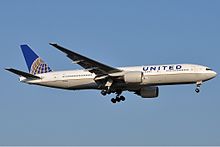On March 23, 1994, Aeroflot Flight 593, an Airbus A310 en route from Moscow’s Sheremetyevo International Airport to Hong Kong’s Kai Tak Airport, met a devastating fate that claimed the lives of all 75 individuals aboard. The passengers included 63 civilians, and the crew comprised nine flight attendants and three pilots. This tragic incident unfolded due to a critical lapse in cockpit protocol, ultimately leading to one of the most shocking aviation disasters in history.
The catastrophic events were set in motion when Yaroslav Vladimirovich Kudrinsky, the flight’s relief pilot, made a fateful decision to allow his two teenage children into the cockpit. Kudrinsky, a seasoned aviator with years of experience, likely viewed this as an innocent gesture to share the excitement of flying with his children. His 12-year-old daughter, Yana, and 16-year-old son, Eldar, entered the cockpit during the flight, a violation of standard aviation safety procedures. While the autopilot was engaged, Kudrinsky permitted his children to interact with the aircraft’s controls, unaware of the potential consequences of his actions.
Initially, the situation appeared harmless. The autopilot remained engaged, which theoretically should have prevented any direct impact on the plane’s flight path. However, the incident took a deadly turn when Eldar, seated in the captain’s chair, applied excessive force to the controls. Unbeknownst to him, his actions partially disengaged the autopilot. In this state, the autopilot’s safeguards were overridden, and Eldar inadvertently assumed manual control of the aircraft for approximately 30 seconds. This brief window of unintentional control proved disastrous.
Under Eldar’s unintended input, the Airbus A310 veered sharply off its intended course. The aircraft began to bank steeply, causing confusion and alarm among the crew. The cockpit voice recorder captured the escalating tension as Yaroslav and the other pilots realized something was amiss. Desperately trying to regain control, Yaroslav and his colleagues attempted to correct the plane’s trajectory, but the situation rapidly spiraled out of control.
As the aircraft’s bank angle increased, it triggered the automatic stall warning system. This warning, a critical indicator of an impending aerodynamic stall, signaled that the aircraft was losing lift and at risk of falling from the sky. The crew’s efforts to stabilize the plane were hindered by the limited time available and the confusion caused by the unexpected situation. Adding to the chaos, Yana’s terrified cries filled the cockpit, a heart-wrenching reminder of the human cost of the unfolding disaster.
Despite the pilots’ desperate attempts to recover, the Airbus A310 experienced a stall and entered an uncontrollable dive. The aircraft plummeted toward the earth at an alarming rate, descending into the remote and rugged Kuznetsk Alatau mountain range in western Siberia. In the final moments, there was a brief glimmer of hope as the crew managed to partially recover from the dive. However, this recovery was short-lived. A subsequent stall sealed the plane’s fate, and it crashed into the mountains with catastrophic force, obliterating the aircraft and leaving no survivors.
The aftermath of the crash sent shockwaves through the aviation industry and the public. Investigators retrieved the black box flight recorders, which provided crucial insights into the sequence of events leading to the disaster. The recordings revealed the haunting final moments in the cockpit, including the sounds of panic, shouted commands, and the tragic realization that the situation was beyond recovery.
The investigation determined that the primary cause of the crash was the improper disengagement of the autopilot, exacerbated by the unintentional control inputs made by Eldar. This chain of events highlighted the critical importance of adhering to strict cockpit protocols and the dangers of unauthorized personnel interacting with flight controls. The incident also underscored the need for rigorous training and awareness to prevent similar tragedies in the future.
In the wake of the disaster, Aeroflot and the aviation community implemented stricter safety measures to ensure that such an incident could not recur. Policies regarding cockpit access were tightened, and training programs emphasized the importance of maintaining professional boundaries within the flight deck. Additionally, advancements in autopilot technology and system safeguards were introduced to prevent partial disengagements under similar circumstances.
The loss of Aeroflot Flight 593 remains a poignant reminder of the fragility of human life and the profound responsibilities borne by those entrusted with its safety. For the families and loved ones of the 75 victims, the tragedy left an indelible mark, compounded by the knowledge that it might have been avoided. While time has passed since that fateful day, the lessons learned continue to resonate within the aviation industry, serving as a solemn testament to the necessity of unwavering vigilance and professionalism in the skies.

Sophia Rivers is an experienced News Content Editor with a sharp eye for detail and a passion for delivering accurate and engaging news stories. At TheArchivists, she specializes in curating, editing, and presenting news content that informs and resonates with a global audience.
Sophia holds a degree in Journalism from the University of Toronto, where she developed her skills in news reporting, media ethics, and digital journalism. Her expertise lies in identifying key stories, crafting compelling narratives, and ensuring journalistic integrity in every piece she edits.
Known for her precision and dedication to the truth, Sophia thrives in the fast-paced world of news editing. At TheArchivists, she focuses on producing high-quality news content that keeps readers informed while maintaining a balanced and insightful perspective.
With a commitment to delivering impactful journalism, Sophia is passionate about bringing clarity to complex issues and amplifying voices that matter. Her work reflects her belief in the power of news to shape conversations and inspire change.


